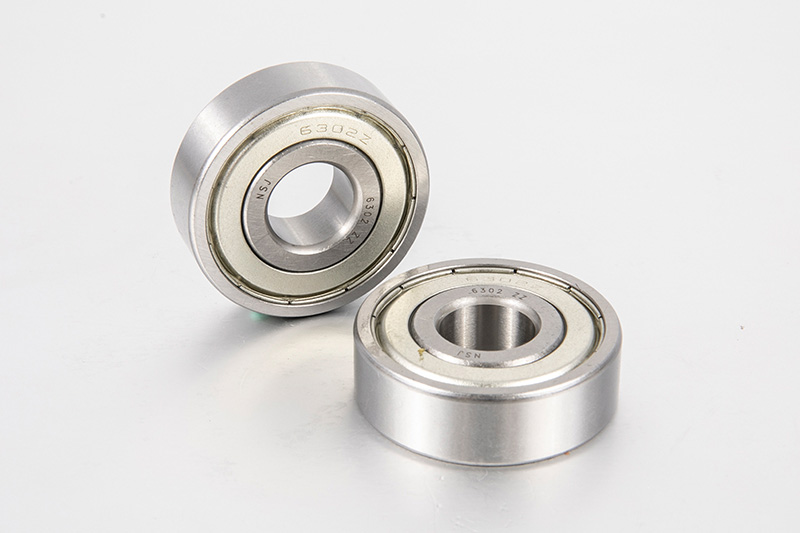1. Regular Inspection:
Routine visual inspections of spherical roller bearings are crucial for detecting early signs of wear, damage, or contamination. During inspections, thoroughly examine the bearing surfaces, including the inner and outer races, rollers, and cage. Look for discoloration, scoring, pitting, corrosion, or any anomalies that may indicate abnormal wear patterns or stress concentrations. Additionally, listen for unusual noises during bearing rotation, which could signal impending failure. Regular inspections allow maintenance personnel to identify issues promptly and take corrective action to prevent costly downtime and equipment damage.
2. Lubrication:
Proper lubrication is vital for maintaining the performance and longevity of spherical roller bearings. Lubricants reduce friction between bearing components, dissipate heat, and protect against corrosion and wear. Follow manufacturer recommendations for selecting the appropriate lubricant type, viscosity grade, and re-lubrication interval based on operating conditions, load levels, and environmental factors. Use lubrication equipment, such as grease guns or automatic lubricators, to apply lubricants accurately and evenly to bearing surfaces. Monitor lubricant levels regularly and replenish or replace lubricants as needed to ensure bearing operation and reliability.
3. Contamination Control:
Contamination poses a significant threat to spherical roller bearings, to premature failure and performance degradation. Implement effective contamination control measures to minimize the ingress of dirt, dust, moisture, and other contaminants into bearing assemblies. Use sealing devices, such as rubber seals or labyrinth seals, to protect bearings from external pollutants and retain lubricants within the bearing cavity. Maintain cleanliness in the surrounding work environment by implementing proper housekeeping practices, installing air filtration systems, and sealing entry points to prevent contamination from entering critical machinery components.
4. Alignment and Installation:
Proper alignment and installation of spherical roller bearings are essential for performance and reliability. Ensure that bearings are mounted securely and aligned accurately according to manufacturer specifications. Misalignment can result in increased friction, uneven loading, and premature wear, to reduced bearing life and potential equipment failure. Utilize precision alignment tools, such as dial indicators or laser alignment systems, to align shafts, housings, and bearings within acceptable tolerances. Follow proper installation procedures, including proper seating of bearings, torque tightening of mounting bolts, and verification of concentricity to prevent misalignment-related issues and ensure trouble-free operation.
5. Temperature Monitoring:
Monitoring operating temperatures of spherical roller bearings is a critical aspect of predictive maintenance practices. Elevated temperatures can indicate issues such as inadequate lubrication, overloading, or excessive friction, which may to bearing overheating and premature failure. Use temperature monitoring devices, such as temperature probes, thermocouples, or infrared thermometers, to measure bearing temperatures regularly during operation. Establish baseline temperature ranges for normal operation and identify deviations that may require further investigation or corrective action. Monitor trends in temperature fluctuations over time to detect potential problems early and implement proactive maintenance measures to prevent catastrophic bearing failure and equipment downtime.
6. Vibration Analysis:
Vibration analysis is a powerful diagnostic tool for detecting mechanical issues and abnormalities in spherical roller bearings. Abnormal vibration patterns, frequencies, or amplitudes can indicate bearing defects, misalignment, imbalance, or other mechanical issues that may compromise bearing performance and reliability. Conduct periodic vibration analysis using portable vibration monitoring equipment or online vibration monitoring systems to assess the health and condition of bearings during operation. Analyze vibration data to identify root causes of vibration anomalies and prioritize corrective actions based on severity and criticality. Implement vibration monitoring programs as part of a comprehensive predictive maintenance strategy to minimize unplanned downtime, optimize equipment reliability, and extend bearing service life.
7. Load Management:
Proper load management is essential for ensuring the longevity and reliability of spherical roller bearings under operating conditions. Avoid overloading bearings beyond their rated capacities, as excessive loads can to premature fatigue, stress, and failure. Calculate bearing loads accurately based on operating conditions, dynamic forces, and load distribution factors to prevent overloading and ensure bearing performance. Consider factors such as radial and axial loads, shock loads, dynamic forces, and operating speeds when designing bearing arrangements and selecting appropriate bearing types and configurations. Distribute loads evenly across multiple bearings when supporting heavy loads or accommodating complex motion profiles to minimize stress concentrations and maximize load-bearing capacity. Implement load-sharing mechanisms, such as tapered roller bearings, thrust bearings, or preloaded bearing arrangements, to evenly distribute loads and minimize wear on individual bearings.
8. Condition Monitoring:
Condition monitoring is a proactive maintenance practice that involves continuous monitoring and analysis of spherical roller bearings' health and performance parameters. Implement a comprehensive condition monitoring program to detect early warning signs of potential issues, assess bearing condition, and schedule timely maintenance interventions to prevent unplanned downtime and equipment failures. Utilize a combination of non-invasive monitoring techniques, including vibration analysis, oil analysis, thermography, ultrasonic testing, and acoustic emission monitoring, to assess bearing health and detect abnormalities indicative of impending failure. Establish baseline performance metrics, trend analysis criteria, and alarm thresholds for monitoring key parameters, such as vibration levels, temperature variations, lubricant condition, and wear debris analysis. Integrate condition monitoring data with computerized maintenance management systems (CMMS) or enterprise asset management (EAM) software to facilitate data-driven decision-making, prioritize maintenance activities, and optimize resource allocation for equipment reliability and minimizing lifecycle costs.
Spherical Sealed Spherical Roller Bearings thrust bearings
Spherical roller thrust bearings have specially designed raceways and asymmetrical rollers. The bearings can accommodate axial loads acting in one direction and simultaneously acting radial loads. The load is transmitted between the raceways via the rollers at an angle to the bearing axis, while the flange guides the rollers.














